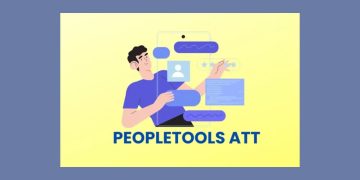Public health is vast and ever-changing, but its practitioners work tirelessly to improve children's life outcomes in several ways. Public health professionals are persistent in ensuring that every child has the opportunity to grow up healthy and flourish. They work hard to develop policies and programs that help improve the quality of life for kids.
It's no secret that kids need a good childhood to thrive. Unfortunately, not all kids have access to the basic necessities required for a happy and healthy upbringing. In this blog post, we'll discuss how public health officials work to improve children's quality of life. Stay tuned for more information!
Public health practitioners work to promote healthy development.
Healthy development is essential for kids to grow up to be happy and prosperous adults. Public health officials promote positive parenting and prevent child abuse and neglect. They also work to create positive learning environments and develop programs to increase access to quality child care. Early Head Start is a federally-funded program designed by public health officials that provides comprehensive services to low-income pregnant women and households with young children. The program includes many benefits, including home visits, health screenings, and parenting education.
Public health practitioners work to promote outdoor activities.
Public health practitioners work to promote healthy outdoor activities in several ways. They collaborate with schools and communities to create safe and fun playgrounds. Many kids spend a significant part of their day in front of screens, leading to health problems later in life. Public health has developed guidelines to provide screen time recommendations by age. These suggestions are based on the latest research on kids and the effects of screen time. Parents should encourage their kids to spend time outdoors every day as outdoor activities are linked with several health benefits, such as increased physical activity and improved mental health. The US Department of the Interior's Every Kid in a Park program is a government-run initiative that allows free access to national parks and other public sites. The program also provides resources for educators and families, such as tips for exploring public lands safely.
Public health practitioners work to reduce injuries and violence.
Injuries and violence are major public health problems, and they're especially common among kids. Bullying, car accidents, and gun violence are just some types of injuries and violence that public health officials strive to prevent. They work with legislators to create laws and policies that make it harder for kids to access guns. They also work with schools to create safe and supportive environments and increase funding for violence prevention programs. Public health officials have developed a program to reduce injuries and violence known as the Safe Routes to School program. This program operates with schools and communities to create safe routes for kids to walk or bike to school. It also provides resources for educators and families, such as tips for walking and biking safely.
Public health practitioners work to ensure that all kids have access to healthcare.
One of the most important ways public health improves children's quality of life is by ensuring that all youngsters have access to healthcare. According to the CDC, in the year 2021, 41% of the kids between the age of 0–17 years were uninsured. Public health officials work to guarantee that all kids have access to healthcare. They work with healthcare providers to make sure that they're providing quality care to kids. Public health practitioners have developed an insurance program to help improve children's access to healthcare: the Children's Health Insurance Program (CHIP). It is a federally-funded insurance program for kids who don't have access to healthcare through their parents' job-based health insurance. CHIP covers doctor's visits, immunizations, prescriptions, hospitalizations, and more. They also help improve children's access to dental care by working with state and federal legislatures to pass laws requiring dental coverage in Medicaid and CHIP. They collaborate with dental schools to increase the number of dentists trained to care for kids and take initiatives to increase funding for dental care programs.
Public health officials work to prevent childhood obesity.
Obesity is a severe issue among kids in the United States, and public health officials strive to resolve it. The CDC reports that 19.7% of children between the ages of 2 – 19 years are obese in the United States, affecting about 14.7 million kids from 2017-2020. Childhood obesity can cause many health issues, including type 2 diabetes, high blood pressure, and sleep apnea. Public health professionals aim to prevent childhood obesity in numerous ways. They work with schools to develop a healthy school environment, access to healthy food, and safe places to play. A program public health officials have designed to prevent childhood obesity is the Let's Move! Campaign. It is a nationwide initiative encouraging kids to eat healthily and be active. The initiative includes several programs and resources, including school curricula, after-school activities, and community gardens. They also work with food manufacturers to create healthier foods and retailers to make healthy foods more affordable.
Public health practitioners work to improve mental health.
Mental health is essential to overall health, but it's often not given the attention it deserves. Youngsters can suffer from several different mental health disorders, including anxiety, depression, and ADHD. Mental health disorders can significantly impact kids' lives, making it hard for them to succeed in school and causing problems in their relationships. Public health officials have developed the Mental Health First Aid program to improve mental health in kids and adults. It guides people in recognizing and responding to mental health crises and includes different resources, such as an online course and a guide for first responders. Parents and caregivers can also take the course to learn more about supporting their children's mental health.
Conclusion
There are many different aspects to public health, and it is constantly evolving to meet the needs of society. We hope the details in this article gave you a better understanding of public health and its impact on children's lives. What is the most critical aspect of public health for kids? Let us know in the comments below!

























